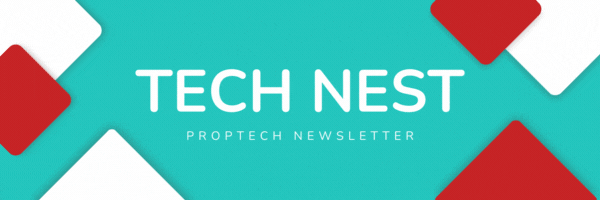- Tech Nest: the Proptech Newsletter
- Posts
- Demand Capture vs. Demand Generation
Demand Capture vs. Demand Generation
Why so many startups overspend on acquisitions

This week, I’m cutting right to the chase:
Startups are spending too much on customer acquisition because they haven’t focused on selling to customers who are already looking to buy.
We discussed the challenge of breaking through growth plateaus a few weeks ago and how some tactics (especially cost-per-click advertising) tend to have efficiency thresholds. And one of the questions to ask when attempting to push passed growth plateaus is, “Have you maximized capturing existing demand in the market?”
The all-too-common answer is: no.
Let’s get started with definitions.
Demand Capture: Demand capture is a reactive marketing strategy that targets customers who are actively searching for a specific product or service. Common tactics include technical and non-technical search engine optimization (SEO), search engine marketing (SEM), other cost-per-click ad channels with defined audiences, and landing page optimization. The purpose of the tactic is to target only those with known, existing demand for a product or service.
Demand Generation: Demand generation is a proactive marketing strategy focused on creating awareness and interest in a product or service. This strategy uses marketing tactics such as content marketing, social media, audience-based advertising, and SEO to educate and engage the target audience. The purpose is to build brand and/or solution awareness and generate demand for a product or service.
Capturing demand tends to cost less to acquire customers than generating demand. When you’re having to create the demand for a product, you’re having to move your prospects through the entire customer lifecycle, often starting from the stage of “Unawareness.”
There are many ways to look at the customer lifecycle stages. Some businesses may require additional steps, but here’s a simplified version to help explain the different stages.

You can see, as the prospect progresses from left to right through the different stages, intent increases. As intent increases, so does the likelihood of that prospect buying. But if you’re the one doing all the work to get that prospect to progress through every stage, that means more emails, more retargeting, more phone calls—more cost.
One way to think about this is: the higher the prospects' intent, the lower the cost to convert.

If You’re Too Early, It Could Cost You
Early movers tend to be at a disadvantage simply because people don’t know to look for their product. This might be because it's a new product solving a new problem, the problem is not well-articulated amongst its buyers, or the technology is so new few are comfortable giving it a shot.
Early mover that breakout, also become the model many want to emulate. Uber, Airbnb, WeWork—these startups have inspired many to follow in their footsteps, not fully understanding the amount of effort to generate demand needed for these businesses.
Let’s take a closer look at WeWork.
WeWork could have focused on capturing existing demand when building their coworking brand. They would have grown MUCH slower—probably too slow to warrant any VC investment. This is part of the challenge of being a first mover—generating the demand for a new category or product is difficult and expensive.
If you look at the search trends for “coworking” vs. the amount of funding WeWork raised, you can see a correlation between the increased search volume and WeWork’s funding (which they in turn spent on customer acquisitions and branding, amongst many other things).
WeWork certainly built a massive business and a well-known brand—but it literally took BILLIONS to be the early mover and leader of that space. Of course, discussing WeWork’s growth strategy gets into the topic of blitzscaling and that’s an article for another day.
Not many proptech companies are attempting to build a new category (like mainstream coworking space on-demand). Many have created a better customer experience or smarter tools to solve problems that are already well-defined with a customer base waiting to buy.
If your startup helps customers buy properties, get funding, manage rentals, report earnings, or automate communications between agents and clients—there’s existing demand for your product already at scale.
The scale is different from product to product, but more than likely, there is demand in existence today for you to capture without spending your way to the moon.
Keep It Simple
Keep your acquisitions strategy simple by focusing on capturing existing demand. Add in demand generation to help push beyond your growth plateaus when necessary. There’s a trap in believing you have to be the “winner-take-all champion” in the proptech space—avoid this thinking and the overspending that comes with it. Especially now as capital is more expensive and raising comes with less-than-favorable terms, you can build a fast-growing, healthy startup by focusing on capturing existing demand.
Proptech News
Weekly Podcast Feature
How California’s Leading ADU Startup Leverages Tech for Smarter Production & Distribution
Sean Roberts, the CEO of Villa, joins Tech Nest today to discuss what he's leading at Villa. He joined the company earlier in the year, and has is helping expand Villa's ADU empire across the state of California. As the largest provider of ADUs in California, Sean breaks down the key advantages Villa has over the competition when it comes to manufacturing, logistics, and working with local governments. They may be a construction company on the service, but there's far more than what meets the eye. Listen in to what Sean has to say.
Have a topic you want to see written about next week? Submit your questions here or respond to this email.


